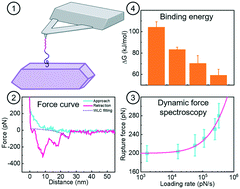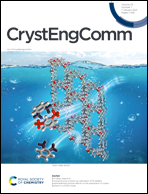Dynamic force spectroscopy for quantifying single-molecule organo–mineral interactions
Abstract
Organo–mineral interactions have long been the focus in the fields of biomineralization and geomineralization, since such interactions not only modulate the dynamics of crystal nucleation and growth but may also change crystal phases, morphologies, and structures. The utilization of an atomic force microscopy (AFM)-based dynamic force spectroscopy (DFS) technique makes it possible to quantify the single-molecule scale organo–mineral binding free energy (ΔGb) correlated with interfacial free energy (γ) and the nucleation energy barrier (ΔG). In this highlight, we briefly review theories of force spectroscopy (FS) and DFS, indicating that single-molecule force spectroscopy (SMFS) can be distinguished with the worm-like chain (WLC) model, and linear and nonlinear DFS data can be analyzed with the Bell–Evans and Friddle–Noy–De Yoreo models to derive noncovalent binding information through the introduction of detailed procedures for DFS experiments from AFM tip modification to FS collection. Moreover, we present some application cases of DFS in unraveling the mechanisms underlying organo-modified nucleation rates, nucleus critical sizes, and phase transformations as well as facet-dependent organo–mineral interactions. The use of an AFM-based DFS technique will improve the fundamental understanding of organo–mineral interactions that affect organo-modified crystal nucleation and growth in both biomineralization and geomineralization processes.

- This article is part of the themed collections: Crystal Growth and 2020 Highlight article collection


 Please wait while we load your content...
Please wait while we load your content...